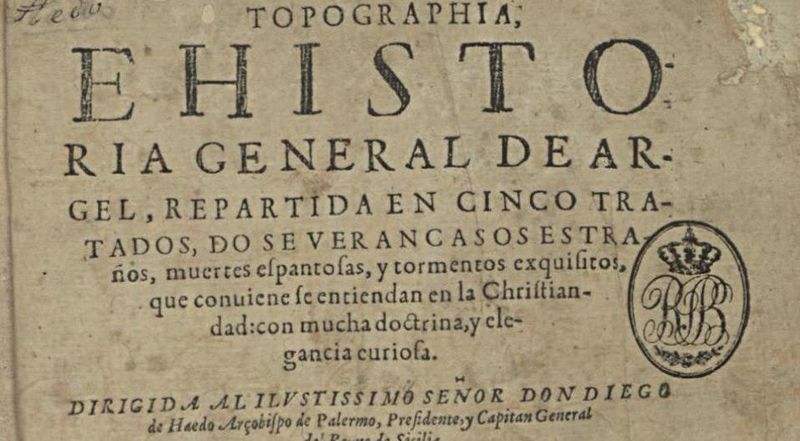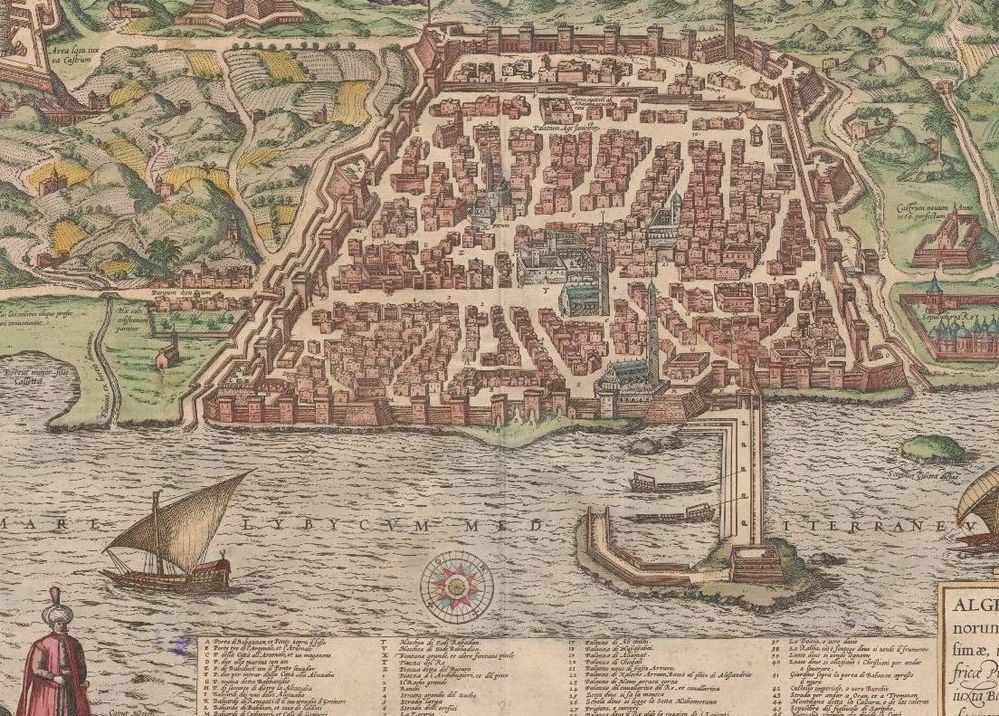
Antonio de Sosa (c. 1538-1587) and the Topographia of Algiers
Antonio de Sosa’s Topographia, e Historia general de Argel (Valladolid, 1612) is an extraordinary text shaped by the author’s four-year captivity in the city of Algiers in the late 1570s. It is made up of five ‘books’ which together offer a lengthy and detailed account of de Sosa’s imprisonment and his extensive knowledge of the city and its history, together with a series of dialogues on captivity, Christian martyrs in Algiers, and theological matters.
The initial publication did not mention de Sosa as its author; it was published several decades after his death by another man who sought to pass off the narrative as belonging to one Reverend Diego de Haedo, who continues to be credited as the author of the book in library catalogues. However, scholars have made a persuasive case for de Sosa’s authorship of this fascinating narrative. So, who was de Sosa?
Antonio de Sosa was born in Portugal around 1538, where he obtained the title of doctor in theology and a degree in canon and civic law before eventually being appointed to take up the important role of vicar general in Agrigento, Sicily. However, while en route to take up his new appointment in April 1577, de Sosa (along with members of his family and other passengers) was kidnapped by Barbary corsairs and taken to Algiers, where he was held captive until July 1581. De Sosa spent the years of his imprisonment in the household of ka’id Muhammad, a Jewish renegade who was an important municipal official in Algiers.

Detail from a map of Algiers from Georg Braun and Frans Hodenberg’s Civitates orbis terrarum. De praecipuis totius universi urbibus. Liber secundus (Cologne, 1575). Image credit: Wikimedia Commons.
Although da Sosa spent much of his time in confinement, he also undertook forced labour in the city, meaning that he gained an understanding of the city’s topography, inhabitants, sights, and sounds first-hand. De Sosa likewise amassed a wealth of information about the city’s institutions, customs, and inhabitants through interactions and exchanges with various other Christian captives (among them Miguel de Cervantes), visitors to his captor’s house, and members of the household.
Many intercessions were made to help de Sosa pay his ransom, not least by Philip II of Spain, who made repeated efforts to help de Sosa. Despite these kinds of official interventions, de Sosa ultimately regained his freedom by escaping rather than being ransomed. He went on to take up his post in Agrigento, but his position – and favour with Philip II – were later rocked by revelations of his secret marriage and falsification of his ‘lay’ priest status.
While the Topographia has never been translated into English in full, the first part, which deals with the topography and customs of Algiers, is available in translation in María Antonina Gracés and Diana de Armas Wilson’s An Early Modern Dialogue with Islam: Antonio de Sosa’s Topography of Algiers (University of Notre Dame Press, 2011). This translation offers contemporary English-language readers a fascinating view into the daily life of this important city as documented by a late sixteenth-century Christian captive.
Further Reading:
Topographia, e Historia general de Argel (Valladolid, 1612). Available at the British Library: General Reference Collection 581.i.21 and General Reference Collection G.6387. Also available online via Biblioteca Nacional de Portugal https://purl.pt/14495/1/index.html#/1/html
María Antonina Gracés, ed., Diana de Armas Wilson, trans., An Early Modern Dialogue with Islam: Antonio de Sosa’s Topography of Algiers (University of Notre Dame Press, 2011) contains an excellent introduction and account of Antonio de Sosa’s life, together with a modern English translation of the first part of the Topographia.
This blog post arises from a project that has received funding from the European Union’s Horizon 2020 research and innovation programme under the Marie Sklodowska-Curie grant agreement No 101024274


